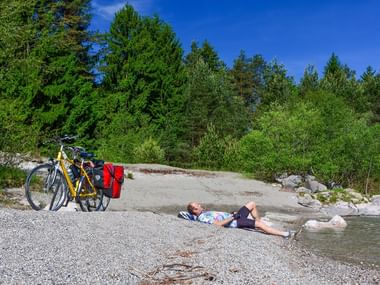The Alps and the Adriatic, mountains and sea, lakes and the sea: the 410-kilometer Alpe-Adria Cycle Path from Salzburg to Grado through the Salzburg region, Carinthia, and Friuli-Venezia Giulia offers all this and more.
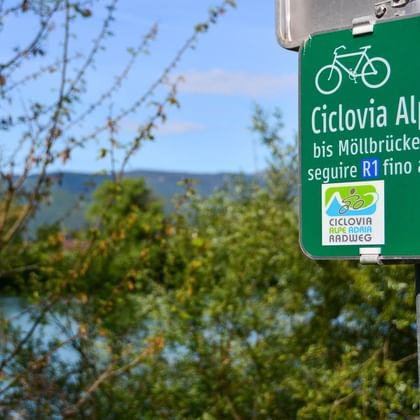

The Alps and the Adriatic, mountains and sea, lakes and the sea: the 410-kilometer Alpe-Adria Cycle Path from Salzburg to Grado through the Salzburg region, Carinthia, and Friuli-Venezia Giulia offers all this and more.
We start in Salzburg, where Baroque and modern buildings harmoniously coexist and, of course, the musical genius Mozart. Once it was salt – today, culture and cuisine are the defining themes. Not only during the festival season does the city welcome people from all over the world to visit Mozart's birthplace in the Getreidegasse, Mirabell Palace, and the cathedral. In the narrow streets, we discover a hat maker and cafés such as the traditional Tomaselli. To get in the mood, let's go for a “Kaffeetscherl” in Salzburg, because enjoyment is simply a way of life here. An ‘Einspänner’ perhaps, or would you prefer a “Brauner”?
Next door, hand-rolled original Salzburg Mozartkugeln, the real ones in blue and silver foil, are on display in the window of the Café-Konditorei Fürst. The great-grandson of the inventor, Norbert Fürst, still makes them today from nougat, pistachio marzipan, and chocolate.
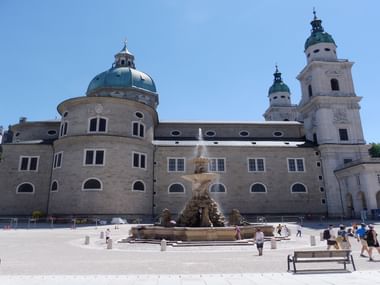
Dairy products are another defining culinary theme in the region, such as the cheese sold in the tiny “Kaslöchl” in Salzburg. Customers crowd into the seven-square-meter shop, which offers 150 different types of cheese. There are many of these small but wonderful shops in the narrow streets. Incidentally, all the shops are marked by artistically designed wrought-iron signs that have to blend in with the cityscape, even those of the more modern companies.
In Salzburg, we treat ourselves to a boat trip on the Salzach River, which offers views of all kinds of sights, including the towering Hohensalzburg Fortress. It couldn't be more beautiful: the boat turns in circles and rocks to the sounds of Mozart. The English captain and his ship dance the waltz.
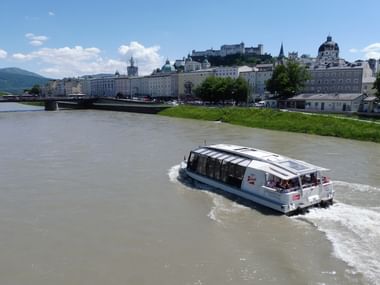
But now: hop on your bike and start pedaling. Ride along the Salzach river out of the city and through the Tennengau region. The impressive mountains are always in view. In Bischofshofen, you will see the ski jump on your right. We'd rather not race down there. In Schwarzach, we take a break at a snack bar and watch the colorful hustle and bustle in front of an inn.
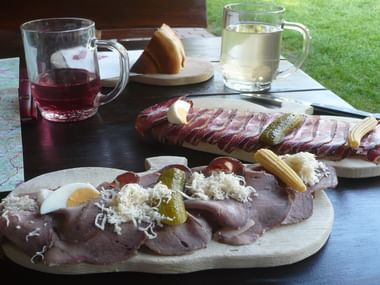
There are a few more ups and downs, then we pass through the Klammstein Tunnel into the Gastein Valley. We ride leisurely past cows, farms, and goats to Bad Hofgastein with its Alpine thermal baths and two thermal lakes. These allow you to splash around in warm water even in late autumn. Thermal baths are an important topic here: just a few kilometers further on in Bad Gastein, 17 thermal springs attract visitors, gushing out a million liters of water per day. Head straight to the Felsentherme and relax your legs.
The route leads directly past the Bad Gastein waterfall. Old villas bear witness to former visits by the hautevolee. Franz Schubert is said to have composed several works here. Emperor Frederick III and the physician Paracelsus also cemented its fame as the Monte Carlo of the Alps. Emperor Franz Joseph himself traveled in a saloon car to the opening of the Tauern Railway station. But we don't get on here; we load our bikes at Böckstein station and race through the Tauernschleuse to Mallnitz. Because you don't cross the Alps, you travel through them on the shuttle train. There can hardly be a more relaxed way for cyclists to cross the Alps. A long, rapid descent follows. The backdrop is not bad: snow-covered mountain peaks, lush green meadows dotted with yellow buttercups, primroses, and dandelions. Every now and then, a small waterfall splashes in the Mölltal valley. In the Schanigarten (Austrian for beer garden), you can enjoy Carinthian cheese noodles with brown butter, accompanied by a summer spritzer, please, madam.
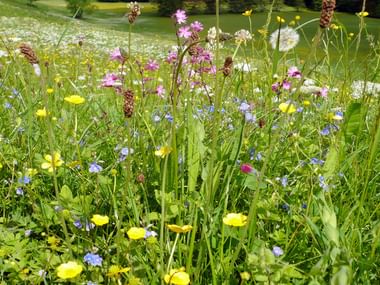
You are never far from water in Carinthia. In Spittal an der Drau, you can head straight to the “Warmbad” (warm bath): it's called Drautalperle. The floor of the Spittal Folk Museum in Porcia Castle is adorned with a 200-square-meter panoramic photo of Carinthia, clearly showing the water worlds of Carinthia, the many lakes, and the Drau river, along which we continue cycling to Villach. There is even a 182-square-meter 3D relief of the federal state with sound, image, and light effects in Schillerpark. For a good overview, you can also climb the 239 steps of the 94-meter-high parish tower of St. James' Church. The highest tower in Carinthia offers views as far as the Julian Alps.

But first, we continue to stroll through the alleys of the pretty old town. Even if you're not staying overnight, you can still enjoy everything here without any worries: right next to the Drau bridge, the Radbutler bike service offers free and secure storage for bikes and luggage. Kärntentherme is the name of Spittal's water park, featuring a black hole slide, outdoor thermal pools, and bubbling jets. Ah! One more glass of Carinthian wine in the evening, then we'll go “napfatzn.” In Carinthia, that means go to sleep.
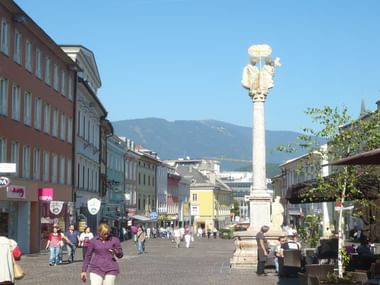
We turn off onto a bridge built especially for cyclists and ride along the Gail toward Italy. It is almost deserted here. Gravel banks and river beaches invite us to take a break. The monastery ruins watch over Arnoldstein, with the curious scrap tower below. “Production of scrap by pouring from a height” is written there. Operations ceased in 1975. In the local bakery café, we hear German, Slovenian, and Italian. This is not surprising in the border triangle, but Slovenian is also an official language in Carinthia and has a long history. We are always fascinated by Austrian German and collect words: Preispickerl, Stubenmädchen, Fluchtfolge.
